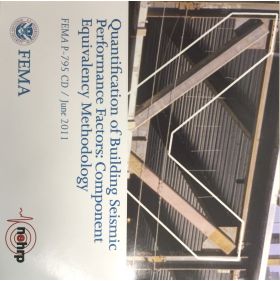The ATC-63-1 CD (FEMA P-795 CD) report, Quantification of Building Seismic Performance Factors: Component Equivalency Methodology, was developed under a contract from the Federal Emergency Management Agency (FEMA) under the ATC-63-1 project. (Published 2011, 290 pages)
On the CD
The ATC-63-1 CD (FEMA P-795 CD) report, Quantification of Building Seismic Performance Factors: Component Equivalency Methodology
ABSTRACT: As part of its responsibilities under the National Earthquake Hazards Reduction Program (NEHRP), and in accordance with the National Earthquake Hazards Reduction Act of 1977 (PL 94-125) as amended, FEMA is charged with supporting activities necessary to improve technical quality in the field of earthquake engineering. The primary method of addressing this charge has been supporting the investigation of seismic and related multi-hazard technical issues as they are identified by FEMA, the development and publication of technical design and construction guidance products, the dissemination of these products, and support of training and related outreach efforts. These voluntary resource guidance products present criteria for the design, construction, upgrade, and function of buildings subject to earthquake ground motions in order to minimize the hazard to life in all buildings and increase the expected performance of critical and higher occupancy structures.
This publication builds upon an earlier FEMA publication, FEMA P-695, Quantification of Building Seismic Performance Factors (FEMA, 2009b). FEMA P-695 presents a procedural methodology for reliably quantifying seismic performance factors, including the response modification coefficient, R, the system overstrength factor, _O, and the deflection amplification factor, Cd, used to characterize the global seismic response of a system.
While the methodology contained in FEMA P-695 provides a means to evaluate complete seismic-force-resisting systems proposed for adoption into building codes, a component-based methodology was needed to reliably evaluate structural elements, connections, or subassemblies proposed as substitutes for equivalent components in established seismic-force-resisting systems. The Component Equivalency Methodology presented in this document fills this need by maintaining consistency with the probabilistic, system-based collapse assessment concepts of FEMA P-695 while providing simple procedures for comparing the tested performance of different components. It is intended to be of assistance to organizations, such as the International Code Council Evaluation Service, who need to compare the seismic performance of alternate components to those contained in established seismic force resisting system.
Available free of charge by contacting FEMA (phone: 1-800-480-2520).
View Title Page, Preface, and Contents on the "Downloadable" tab
